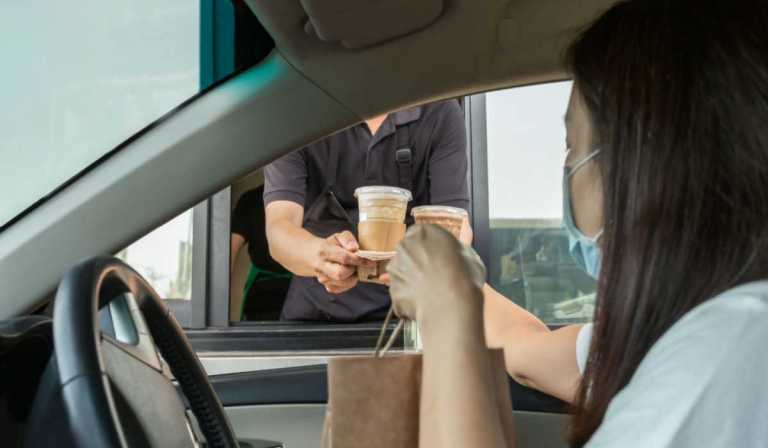
As restaurant customers’ interactions with brands increasingly take place in the digital world, the factors that consumers consider when deciding between eateries are shifting. To hold onto their customers’ loyalty, restaurant brands must adapt accordingly.
“[The digital shift] creates an array of new challenges in the battle for consumers’ attention,” Kasper Garnell, Global Brand & Communications Director at juice bar and coffee shop chain Joe & The Juice, which has more than 300 stores across 16 countries, told PYMNTS in an interview. “If everything you want is at the tip of your fingertips and geographic location is much less of a factor, then it becomes about brand loyalty and, obviously, delivering great products.”
Indeed, taste of the food is the single most common factor influencing consumers’ choice of restaurant, according to data from the March/April edition of PYMNTS’ Digital Divide series, “The Digital Divide: Regional Variations in U.S. Food Ordering Trends and Digital Adoption,” created in collaboration with Paytronix.
Read more: New Research Shows That Regional Dining Quirks Matter in Tailoring Restaurant Offers
Plus, the study, which drew from a February survey of more than 2,500 U.S. adults, also found that, sure enough, brand recognition was the second-most important factor, ranking just above restaurant location. Granted, the strategies required to foster this familiarity are different in the digital sphere than the physical.
As Garnell put it, “How [do you] stay top-of-mind with consumers if they change behavior and don’t walk by a Joe & The Juice twice a day anymore?”
Game, Set, Match
In addition to the standard points-per-dollar model, the brand is taking the gamified approach to loyalty, offering points for completing certain “fun challenges” such as buying three green juices in a week or visiting one of the brand’s stores 10 times in as many days.
“These challenges have shown to be a much more important part of the app experience that we initially anticipated,” Garnell said.
In this way, the brand’s approach resembles that of health-focused fast-casual chain Sweetgreen.
After shutting down its previous loyalty program, which followed an earn-and-burn model, in early 2021, Sweetgreen announced earlier this summer that it is piloting a new Rewards and Challenges loyalty program.
The program, like Joe & The Juice’s, presents tasks for customers to complete, but rather than awarding points for completion, it offers rewards such as a $4 credit or a free beverage. Unlike Joe & The Juice’s program, however, Sweetgreen’s does not include a points-per-dollar component.
Related news: Sweetgreen Spins Purchases Into Personal ‘Challenges’ to Drive Mobile Engagement
As the challenges model takes hold, it remains to be seen whether consumers will opt more for programs that put them in the driver’s seat with flexible rewards points or those that gamify the experience with these surprise challenges.
Into the Metaverse
Garnell noted that, after going “down the rabbit hole of NFTs, Metaverse and web3 in general,” the juice bar and coffee shop brand is “mostly following from the sidelines” with the possibility of getting into the space in the future.
“[I’m] keeping my ear to the ground and getting inspired by how other big brands are utilizing these new tools to engage with their customers,” he said.
The demand for metaverse dining experiences is there, according to data from the July edition of PYMNTS and Paytronix’s Digital Divide study, “Digital Divide: The Move to the Metaverse.” The report, which drew from a May survey of roughly 2,700 United States consumers, nearly one in four have already used the metaverse or reported high interest in doing so. Of these, 54% are “very or extremely interested” in integrating restaurant purchases into their metaverse experiences, and another 19% are somewhat interested.
Read more: Study Shows Restaurants See Metaverse as New Loyalty Play
Playing for Keeps
Garnell advises that, as even more restaurant brands build and launch their loyalty programs, it is key to build direct relationships with consumers rather than going through a third-party intermediary.
“If I can give one piece of advice to anyone out there who’s in the process of building their own digital loyalty program, make sure you own 100% of the data that you capture,” he said.
Indeed, consumers are increasingly coming to expect the kind of personalized digital experiences that are only possible with data-informed segmentation and optimization. In fact, the 2022 edition of PYMNTS’ Restaurant Readiness Index, also created in collaboration with Paytronix, revealed that personalization features within loyalty apps are improving, showing strong growth between September 2021 and April 2022.
See more: More Than Half of Restaurants Depend on Digital Sales, Despite Uptick in On-Premises Orders
“I’ve seen too many friends in this space building their app and POS systems on white label solutions, only to find that they couldn’t get full access to the data later on,” Garnell said. “Being able to analyze the data and optimize the loyalty experience based on that data is everything.”